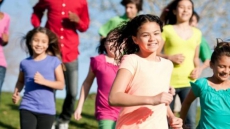Children as young as 15 months can detect anger when watching other people's social interactions and then use that emotional information to guide their own behaviour, shows new research.
Toddlers are capable of using multiple cues from emotions and vision to understand the motivations of the people around them, the findings showed.
"At 15 months of age, children are trying to understand their social world and how people will react," said lead author Betty Repacholi, a faculty researcher at the University of Washington in the US.
"In this study we found that toddlers, who are not yet speaking, can use visual and social cues to understand other people," Repacholi added.
In the experiment, 150 toddlers at 15 months of age watched as an experimenter demonstrated how to use a few different toys.
Then a second person, referred to as the "emoter", entered the room and as the experimenter repeated the demonstration, the emoter complained in an angry voice.
The children then had a chance to play with the toys, but under slightly different circumstances.
For some, the emoter left the room or turned her back so she could not see what the child was doing.
In these situations, toddlers eagerly grabbed the toy and copied the actions they had seen in the demonstration.
In other groups, the angered emoter maintained a neutral facial expression while either watching the child or reading a magazine.
Most toddlers in these groups hesitated before touching the toy, waiting about four seconds on average.
And when they finally did reach out, the children were less likely to imitate the action the experimenter had demonstrated.
The study appeared in the journal Cognitive Development.





